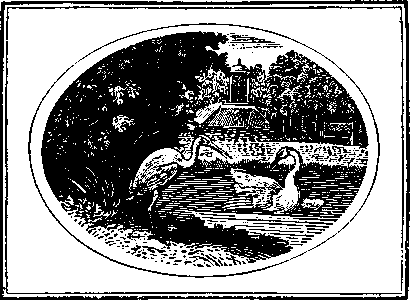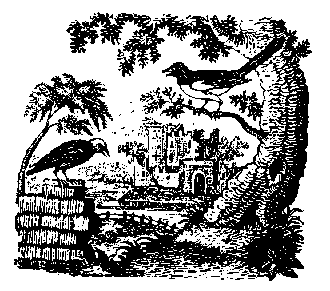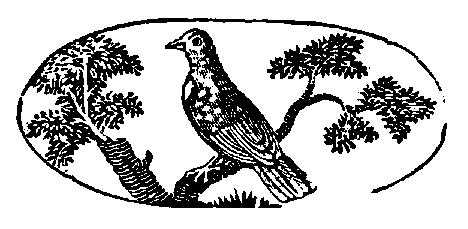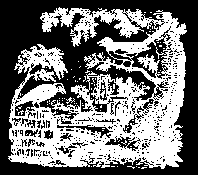you know not the extent of your misfortune.
--- Nathaniel Hawthorne
Mainstreet,1852
 I saw him first in January, when I came to The Montlake Fill to do some field work. He was sitting on a dark green canvas folding chair, off a southside path between Pond #1 and Pond #2. He was covered with a light rain, a tan, brimmed fishing hat, a hooded jacket over a purple flannel shirt and who-knows-what else, work gloves, blackrain pants and rubber boots with bright red soles. He faced northeast into a large patch of tall blackberry. On the ground, to his right, an Army duffel bag, binoculars, and a stripped walking stick.
I saw him first in January, when I came to The Montlake Fill to do some field work. He was sitting on a dark green canvas folding chair, off a southside path between Pond #1 and Pond #2. He was covered with a light rain, a tan, brimmed fishing hat, a hooded jacket over a purple flannel shirt and who-knows-what else, work gloves, blackrain pants and rubber boots with bright red soles. He faced northeast into a large patch of tall blackberry. On the ground, to his right, an Army duffel bag, binoculars, and a stripped walking stick. A week later we spoke. I was walking Pond #2 looking for amazement, when I met his eyes, small slivers in a rough, gray face, creased like a squash, with a boxer's nose, like my father's. "See anything?" I said, trying to sound like a birder.
"Red-wings," he said, in the voice of a guard.
"Anything else?
"I'm only interested in Red-wings," he said.
I hadn't seen a Red-winged Blackbird at The Fill. It seemed too early. "Don't they come later?" I said.
"They're here," he said and returned to his work. "Bye now," I said and looked to the sky.
As I walked toward Pond #3, I heard him speak, again, but not to me. He was making what sounded like a bird call: Oakalee-oakalee. I assumed he was talking Red-wing. A few days later he said that he was talking Red-wing, said he was calling the birds to him.
"Why?" I said.
"Because they shouldn't be here. Nothing living should. Methane's here. Can't smell it. But it's here. You can see it bubble in the ponds. Climbs up from the goddamn garbage. Inflammable. Terrible for birds. And so is the goddarn fertilizer and plant killers that slide off Laurelhurst, and the poisons they use here on Scotch Broom and Loosestrife. Don't say they don't. I've seen them. They call this place a re-fuge, a Re-search Area, but it isn't. It's a goddamn graveyard, that's what it is. And it keeps on killing. I don't want my Red-wings dead."
"Are you going to trap them?"
"No," he said. "Call them. I'm going to call them off before they nest."
 I don't know why he spoke with me that morning, or later. He didn't seem to speak to others, except to the boy he'd sometimes bring, who would sit on the duffel bag, hold his stick, and call with him. Was it because I never said my name or asked his? Or was it because he knew by the way I stood in my running shoes, by the way my low-class binoculars knocked against my torn yellow slicker, by the look of my bird book and the way my notebook pages curled in the rain, that I wasn't from Audubon or from The Center, that I was just a neighborhood man with nothing to do?
I don't know why he spoke with me that morning, or later. He didn't seem to speak to others, except to the boy he'd sometimes bring, who would sit on the duffel bag, hold his stick, and call with him. Was it because I never said my name or asked his? Or was it because he knew by the way I stood in my running shoes, by the way my low-class binoculars knocked against my torn yellow slicker, by the look of my bird book and the way my notebook pages curled in the rain, that I wasn't from Audubon or from The Center, that I was just a neighborhood man with nothing to do?
When I got home I checked Aanerud's published list to see his Red-winged entry. Aanerud says that between '72 and '89 Red-wings were year-round residents at The Montlake Fill and that in the fall hundreds "could be seen." So far, I hadn't seen one. Had the man in the chair seen any? I decided to lay off this question. I was making the man in the chair and his Red-wings my project. They weren't my project. As the man suspected, I didn't have a project. I only had a site, The Montlake Fill.
On each of my next visits, I looked for him. Sometimes, on early Friday mornings, I would get to the Fill first, but then he'd come, carrying his chair, his bag, his stick, going to his spot, settling in. I'd nod and lift a hand. Later in the morning I'd have a look-see. He'd be sitting there, calling, or raising up his binoculars or a sandwich or his thermos. If invited, I'd stop by and talk Red-wings with him, or talk about how in the '50s and early '60s the University had added to the dump. My Red-wing part of the conversation was small. I still hadn't seen a Red-wing at The Fill.
 He'd seen a dozen, he said. I did mention seeing a Great Blue fly off the lake and light, like Artemis, in Meadow A. He pointed to the ground he sat on and said, "Poison." I asked him why, if The Fill is poison, so much is living here, why birds and plants aren't dropping dead. "they will," he said.
He'd seen a dozen, he said. I did mention seeing a Great Blue fly off the lake and light, like Artemis, in Meadow A. He pointed to the ground he sat on and said, "Poison." I asked him why, if The Fill is poison, so much is living here, why birds and plants aren't dropping dead. "they will," he said.
Sometimes when I'd come to The Fill in the late afternoon or evening, I'd find him fixed in that green chair, or, if he wasn't, he'd be in bushes or standing like an Alder snag, calling, or walking out the side path by The Corporation Yards, or dragging his chairt, his bag and his stick across Mary Gates Memorial Boulevard, in front of The Center. Sometimes he wouldn't show at all. When he didn't, I'd go to where he sat, pretend I was him for a minute, try his call: Oakalee-oakalee-oakalee. White-crowned Sparrows flew up, but no Red-wings. Once, when a friend and I went to The Fill at night to, see a full moon, I thought to walk to his place to see if...I stayed put instead. "Leave him be," I thought, "don't spy."
Others did spy. Some people at The Center suspected that he was homeless and living in The Unmanaged Area. Others thought him strange. No one remembered him on The Fill from years before. Graduate students were told to keep an eye out. I said that he was just another birder, an older man, probably retired, friendly in his way, a little odd, but doing no harm. I skipped the Red-wing part.
 The first Sunday of March, I came to The Fill to see a sunrise. The rain had stopped, but I could taste it. The geese and crow were quiet. Hidden birds sang. No float planes, yet, or helicopters. No bikers. As I left Pond #1, I heard him calling. I stood by willows and waited for more light. I moved closer. I could see him. He stood by his green chair, his duffel bag on end against his side. On his shoulders, chest, and one bare arm were Red-wings, five or six, a male with that red and yellow, and females in streaks of brown, calling back: Skew-skew-skew. He gently clasped each one, pulled it from his body, and lowered it to his bag. More Red-wings came --- males, females, maybe an immature. I don't know how many. Maybe twenty. He'd let the Redwings land, hold on, and then he'd bag them. Only two or three flew back to Blackberry. And they, I think, returned. Soon there were no Red-wings on him, at least none that I could see. He called.
The first Sunday of March, I came to The Fill to see a sunrise. The rain had stopped, but I could taste it. The geese and crow were quiet. Hidden birds sang. No float planes, yet, or helicopters. No bikers. As I left Pond #1, I heard him calling. I stood by willows and waited for more light. I moved closer. I could see him. He stood by his green chair, his duffel bag on end against his side. On his shoulders, chest, and one bare arm were Red-wings, five or six, a male with that red and yellow, and females in streaks of brown, calling back: Skew-skew-skew. He gently clasped each one, pulled it from his body, and lowered it to his bag. More Red-wings came --- males, females, maybe an immature. I don't know how many. Maybe twenty. He'd let the Redwings land, hold on, and then he'd bag them. Only two or three flew back to Blackberry. And they, I think, returned. Soon there were no Red-wings on him, at least none that I could see. He called.
No Red-wings came. He hooked up his duffel bag and chair, found his stick, and walked slowly into Meadow B, toward Parking Lot E-5. I followed him to the bridge over Ravenna Creek and watched him cross the play fields. I don't think he saw me. He didn't turn his head. He did stop, once, to check the birds.
It is May now. I haven't seen him since that Sunday morning. I have seen Red-wings. In mid-April, between Pond #2 and Pond #3, I saw two males in flight.
©1998 Northern Lights
210 N. Higgins
Missoula MT 59802